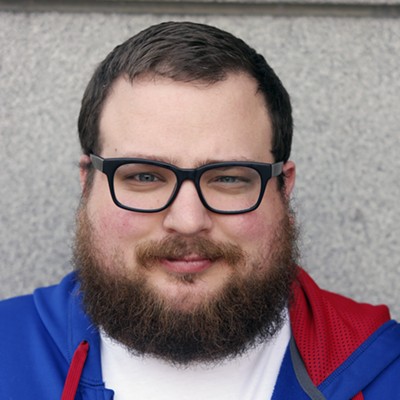Last Friday, The New York Times, hit the NFL hard, reporting that the NFL's research into player concussions was "deeply flawed and incomplete" and that the league hired attorneys and other personnel affiliated with the tobacco industry to help oversee that research. The implication made by the Times was clear: The NFL, in attempting to keep its product palatable to fans, had used similar tactics to those used by the tobacco industry to keep its product palatable to smokers. Earlier this week, the NFL — which gingerly admitted last month that playing football may lead to brain damage — demanded a retraction from the Times, which turned the league down flat.
Whatever the league says notwithstanding, it is clear from research into football injuries and the number of former players who suffer from chronic traumatic encephalopathy, the degenerative brain condition commonly know as CTE, that something has to be done, especially at the youth and high school levels, to reduce instances of repeated blows to players' heads without proper protection. Friday afternoon, as part of a Texas Lyceum conference on the business of football in the 21st century in Fort Worth, researchers deeply involved in the crisis discussed what changes the game must make to remain viable.
"We've been wanting people to say 'a concussion is a brain injury, it's not that you rang your bell, it's something to be taken seriously.' I'm so excited now that we're finally recognizing that it is a brain injury," said Sandra Bond Chapman, the founder and chief director of the Center for Brain Health at the University of Texas at Dallas.
Chapman and researchers at the Center for Brain Health were among the first to study the lasting effects of concussions on youths, monitoring some kids who'd picked up concussions over a period of 25 years for lasting symptoms. Somewhat surprisingly, despite what she's found and witnessed, Chapman said Friday that she was not for keeping younger players away from the game.
"When people hear what I do, they say, 'You've, been saying concussions are brain injuries, you must be against young people playing.' I say, 'Well, if we take football away then we'll have concussions from jumping on cars or rollerblading,'" she said.
Kids are going to do risky things, she said, so a better solution is changing the game in fundamental ways — like creating safer artificial turf, mandating increased safety equipment and changing football's most dangerous play, the kickoff — to make it safer, and following up concussions just as one would with other injuries, like a broken arm.
One of the companies attempting to promote player safety — and catch the crest of what's sure to be a pretty big wave of business — is VICIS. VICIS specializes in designing impact-reduction football helmets, decreasing the chance for a shock injury to the brain.
"[Today's standard football helmets] are designed mainly to prevent skull fractures and they do a pretty good job of that," Clark Hood, vice president of VICIS southwest division said. "It's a two-layer system. You've got the outer shell and the padding inside. Those helmets were not designed to reduce the acceleration and the forces that can occur during impact."
VICIS' helmets have four layers. Basically, the company adds to layers on top of what would've been the outer shell on a traditional helmet. Those aren't rigid and reduce acceleration at impact, much like the crumple zone on a car.
Hood admitted that his company's helmets couldn't stop concussions, but Mathew Matheny, the Beaumont-based lead plaintiff's counsel in a class-action concussion lawsuit, says even a helmet which can lessen the effect of hits that don't generate concussions is important.
"Concussion has become a buzzword. Just because someone doesn't sustain a technical concussion does not mean that they haven't put themselves in a place where they could be sustaining long-term brain damage," Matheny said. "If we can develop technology that's even going to lessen the impact of a sub-concussive blow, we're going to make giant strides in preventing long-term brain damage, which was really the thrust of what our litigation was about. That's CTE, the big buzzword you hear from the NFL now."
Matheny helped his class of former NFL player clients get a nearly $1 billion settlement from the league in April 2015. Under the settlement, the league didn't admit anything, but Matheny says his clients' case at least started the conversation that's continued since the lawsuit was settled.
"The first player to hire me was [former Cowboys great] Lee Roy Jordan. He said, 'I want to know if I have brain damage, and I want to know if something can be done so that my grandchild doesn't have to be concerned that they have brain damage.' That's been the motivation of the people we've represented."
[
{
"name": "Air - MediumRectangle - Inline Content - Mobile Display Size",
"component": "18855504",
"insertPoint": "2",
"requiredCountToDisplay": "2"
},{
"name": "Editor Picks",
"component": "17105533",
"insertPoint": "4",
"requiredCountToDisplay": "1"
},{
"name": "Inline Links",
"component": "18349797",
"insertPoint": "8th",
"startingPoint": 8,
"requiredCountToDisplay": "7",
"maxInsertions": 25
},{
"name": "Air - MediumRectangle - Combo - Inline Content",
"component": "17105532",
"insertPoint": "8th",
"startingPoint": 8,
"requiredCountToDisplay": "7",
"maxInsertions": 25
},{
"name": "Inline Links",
"component": "18349797",
"insertPoint": "8th",
"startingPoint": 12,
"requiredCountToDisplay": "11",
"maxInsertions": 25
},{
"name": "Air - Leaderboard Tower - Combo - Inline Content",
"component": "17105535",
"insertPoint": "8th",
"startingPoint": 12,
"requiredCountToDisplay": "11",
"maxInsertions": 25
}
]











